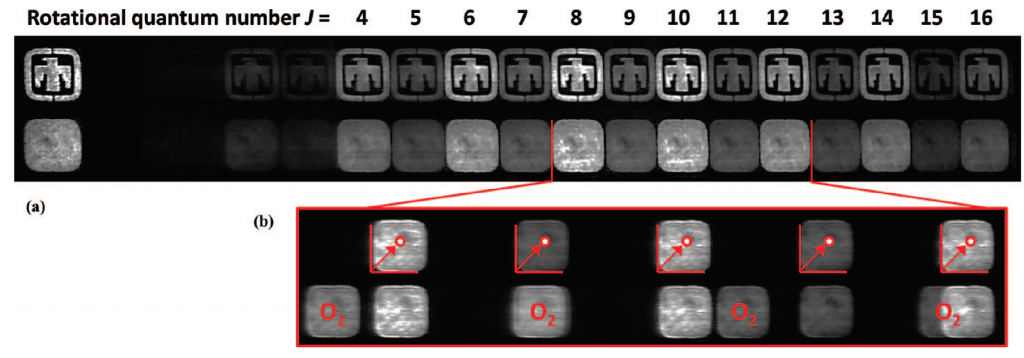Nonlinear coherent Raman spectroscopy has long been the gold standard for the nonintrusive determination of molecular temperature and speciation during chemical reactions. The coherent, laser-like, signal beam allows for the remote probing of even optically hostile environments, while blue-shifted signal of anti-Stokes Raman enables separation from the optical interference of fluorescence. However, because the third-order nonlinear optical approach has traditionally required not only the phase-matching of three input beams, but also very high laser intensities, the approach has been limited to the detection of a single point in space.

At the CRF, we have developed a new two-beam “imperfect” phase-matching approach that has enabled the extension of coherent Raman spectroscopy to both 1D and 2D imaging within a single laser pulse. In the figure below, we demonstrate the simultaneous acquisition of over 15,000 spatially correlated CARS spectra across a plane of space within a single laser pulse by combining this approach with a hyperspectral imaging spectrometer, also developed in our labs. This capability for imaging the state-specific population of molecules across space is now being used in spatially, temporally, and chemically resolved studies of combustion, plasma chemistry, and catalytic reactions.
Figure 1 Showing both (a) 2D-CARS single-shot spectra recorded in pure N2. In the top row, a mask has been imaged within the probe laser beam to the interrogation plane and is mapped onto each rotational state of the N2 pure-rotational spectrum. On the bottom row, the mask has been removed; and (b) A higher dispersion spectrometer was assembled. The top row shows the 2D-CARS spectrum of pure N2 while the bottom spectrum is taken in air. Over 15,000 spatially correlated CARS spectra are thus acquired across a planar spatial field within a single pulse of the laser system.
Key Contributions
- Invention of the 2D-CARS chemical imaging approach
- Extension of this approach to ultrabroadband pulses has enabled multiplex detection of many species
Partner: Prof. Alexis Bohlin, TU Delft